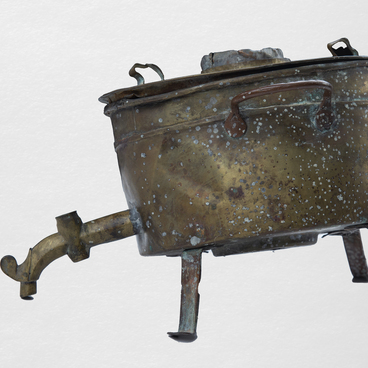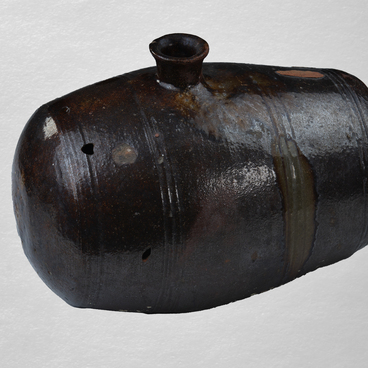In 1648, the Cossacks led by hetman Bohdan Khmelnitsky rebelled against the Polish invaders. The residents of Pogar and neighboring villages supported the rebels. That time there was a mass “Cossack-conversion” of the population: anyone could become a Cossack and join the army. In 1654, the representatives of the Zaporozhian Cossacks, led by hetman Bogdan Khmelnitsky, gathered in Pereyaslavl. They decided to unite with the Tsardom of Russia and swear allegiance to Tsar Alexei Mikhailovich. The oath was taken in the Assumption Cathedral by 344 privates, a colonel, a clerk of a sotnik (lieutenant of Cossack troops), an esaul (Cossack captain), a standard-bearer (Cossack rank equal to second lieutenant), and 24 atamans (title of the supreme military commanders of the Cossack armies). From that time, Cossacks of the Pogar Sotnya became part of the Starodubsky regiment.
By the book, the main weapon of a Cossack was a saber. However, many Cossacks did not have sabers: they were expensive and practically useless in combat. The unfortunate type of sharpening and big weight did not give any advantage against the enemy. That is why Cossacks more often carried other weapons — shashkas.
Unlike the saber, the blade of the shashka was shorter. It was less than a meter long, about 75 centimeters. The blade was not sharpened along its entire length, but only at the end of the blade and necessarily on both sides. The upper part of the shashka — the haft — usually consisted only of the handle with a bent and halved head. There was no part that protected the hand. This distinguished the shashka from the saber and other types of cold weapons. The scabbard was made of wood and covered with leather. On the curved side were fastened rings for a sword belt.
The shashka was in many ways worse than the sword. It could not be used for fencing or for blocking a blow or stabbing an opponent, because the hand could slip on the blade. The shashka was used only in close combat and only for one swinging blow. Among the Cossacks, it was believed that a good warrior needs neither defense nor a second strike.
The shashka was carried over a shoulder with the blade upwards. This arrangement allowed the Cossack to make that single blow — right out of the scabbard at a swing.
In 1821, the Cossacks began to arm only with shashkas. Then the dragoon type of the shashka appeared, featuring a haft with a shackle, just like the exhibit from the Radogoshch Museum. In 1918, the first Soviet Ukrainian division under the command of Nikolay Shchors was formed on the territory of Pogar and its surroundings. Historian Sergey Biryukov suggests that the shashka from the collection of the museum could belong to representatives of the old Pogar Cossack family Krayevoy, who fought in this division.
By the book, the main weapon of a Cossack was a saber. However, many Cossacks did not have sabers: they were expensive and practically useless in combat. The unfortunate type of sharpening and big weight did not give any advantage against the enemy. That is why Cossacks more often carried other weapons — shashkas.
Unlike the saber, the blade of the shashka was shorter. It was less than a meter long, about 75 centimeters. The blade was not sharpened along its entire length, but only at the end of the blade and necessarily on both sides. The upper part of the shashka — the haft — usually consisted only of the handle with a bent and halved head. There was no part that protected the hand. This distinguished the shashka from the saber and other types of cold weapons. The scabbard was made of wood and covered with leather. On the curved side were fastened rings for a sword belt.
The shashka was in many ways worse than the sword. It could not be used for fencing or for blocking a blow or stabbing an opponent, because the hand could slip on the blade. The shashka was used only in close combat and only for one swinging blow. Among the Cossacks, it was believed that a good warrior needs neither defense nor a second strike.
The shashka was carried over a shoulder with the blade upwards. This arrangement allowed the Cossack to make that single blow — right out of the scabbard at a swing.
In 1821, the Cossacks began to arm only with shashkas. Then the dragoon type of the shashka appeared, featuring a haft with a shackle, just like the exhibit from the Radogoshch Museum. In 1918, the first Soviet Ukrainian division under the command of Nikolay Shchors was formed on the territory of Pogar and its surroundings. Historian Sergey Biryukov suggests that the shashka from the collection of the museum could belong to representatives of the old Pogar Cossack family Krayevoy, who fought in this division.



